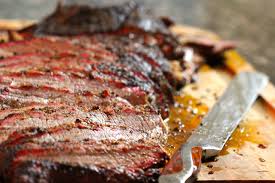Caviar tastes salty and slightly fishy, with a rich, buttery flavor. It has a smooth, delicate texture.
Caviar, often dubbed the “black gold,” is a luxury delicacy enjoyed worldwide. It comes from the roe of sturgeon fish, mainly found in the Caspian and Black Sea regions. Gourmet enthusiasts treasure caviar for its unique taste and texture. Small, shiny pearls burst with a briny, oceanic flavor, offering a subtle nutty undertone.
This exquisite delicacy is typically served chilled, enhancing its crisp, clean taste. High-quality caviar offers a creamy, buttery mouthfeel, distinguishing it from other seafood. Whether savored alone or paired with accompaniments, caviar provides a distinct culinary experience. Its elegance and rich flavor make it a sought-after indulgence.
Introduction To Caviar
Caviar is a luxury food item known for its unique flavor. It consists of salt-cured fish eggs, typically from sturgeon. Many people wonder about the taste of caviar. Let’s dive deeper into this exquisite delicacy.
Origins And History
Caviar has ancient roots, dating back to Persian times. The Persians were among the first to harvest and consume sturgeon roe. They believed it had medicinal properties. Russian Tsars later popularized caviar in Europe. It became a symbol of wealth and luxury.
Today, caviar is enjoyed worldwide. It is often served at high-end events and celebrations. Its rich history adds to its mystique and appeal.
Types Of Caviar
There are various types of caviar, each with unique characteristics. The main types include:
- Beluga Caviar: Known for its large, soft eggs and buttery flavor.
- Osetra Caviar: Medium-sized eggs with a nutty taste.
- Sevruga Caviar: Small eggs with a strong, briny flavor.
The table below summarizes these types:
| Type | Egg Size | Flavor Profile |
|---|---|---|
| Beluga | Large | Buttery |
| Osetra | Medium | Nutty |
| Sevruga | Small | Briny |
Each type offers a unique tasting experience. Your preference may vary based on the flavor and texture you enjoy.
Flavor Profile
Caviar, often seen as a luxurious delicacy, offers a unique taste experience. Understanding its flavor profile will help you appreciate its complexity. Caviar’s taste can be surprising for first-timers, yet delightful for connoisseurs.
Salty And Briny Notes
Caviar often has a salty and briny taste. This flavor comes from the salt used in its preparation. The saltiness enhances the natural taste of the fish eggs. Briny notes remind many of the ocean. This ocean-like flavor is subtle yet distinct. The balance of salt and brine makes caviar unique.
Creaminess And Richness
Beyond its salty taste, caviar also has a creamy texture. This creaminess adds to its richness. Each egg bursts with a smooth, buttery flavor. The rich taste lingers on your palate. Some types of caviar are more creamy than others. This richness makes caviar a sought-after delicacy.
Texture Experience
Many find caviar’s texture experience to be an unexpected delight. This delicacy offers a unique combination of sensations that make it a sought-after luxury. The texture varies with each type of caviar but generally shares some common characteristics. Let’s explore the texture experience of caviar in detail.
Popping Sensation
The first thing you’ll notice is the popping sensation. Each caviar bead, or roe, bursts in your mouth with a gentle pop. This pop releases the flavors inside, giving you a burst of rich taste. It’s like tiny fireworks on your tongue.
Different caviar types pop differently. Some have a firmer pop while others are more delicate. This initial burst is an essential part of the caviar experience.
Smooth Finish
After the pop, you’ll experience a smooth finish. The roe melts slightly, creating a creamy texture. This smoothness lingers on your palate, enhancing the luxurious feel.
High-quality caviar leaves no gritty or grainy aftertaste. Instead, it’s smooth and almost buttery. This finish makes each bite feel indulgent and refined.
To summarize the texture experience:
- Gentle pop of the roe
- Release of rich flavors
- Creamy, smooth finish
The combination of these elements makes caviar a unique culinary delight.
Pairing With Foods
Pairing caviar with foods enhances its unique taste and texture. Whether you prefer traditional pairings or modern combinations, caviar can elevate any dining experience.
Traditional Pairings
Traditional caviar pairings are timeless and elegant. These combinations highlight caviar’s luxurious nature.
- Blini: Small Russian pancakes, perfect for holding caviar.
- Crème Fraîche: Adds a creamy contrast to the salty caviar.
- Chopped Eggs: Both whites and yolks complement caviar’s briny taste.
- Chopped Onions: Adds a sharp, zesty flavor.
- Lemon Wedges: Provides a refreshing citrusy note.
Modern Combinations
Modern combinations offer innovative ways to enjoy caviar. These pairings introduce new and exciting flavors.
- Sushi: Caviar on sushi adds a luxurious touch.
- Avocado Toast: The creamy avocado complements caviar’s richness.
- Pasta: Caviar with pasta creates a gourmet dish.
- Potato Chips: A crunchy and salty pairing for a fun twist.
- Chocolate: Surprisingly, caviar and chocolate create a unique sweet and salty combo.
| Traditional Pairings | Modern Combinations |
|---|---|
| Blini | Sushi |
| Crème Fraîche | Avocado Toast |
| Chopped Eggs | Pasta |
| Chopped Onions | Potato Chips |
| Lemon Wedges | Chocolate |
Serving Suggestions
Exploring the unique taste of caviar is a delightful experience. It’s essential to serve it correctly to enhance its flavors. This section provides you with serving suggestions to enjoy caviar at its best.
Presentation Tips
Presentation plays a key role in the caviar experience. Here are some tips to make your serving appealing:
- Use a mother-of-pearl spoon to avoid metallic taste.
- Serve caviar in a chilled dish to maintain its freshness.
- Place the caviar bowl on a bed of crushed ice.
- Garnish with lemon wedges and fresh herbs for a touch of color.
Best Practices
Following best practices ensures you get the most out of your caviar:
- Always store caviar in the coldest part of your refrigerator.
- Consume caviar within two days of opening.
- Avoid using metal utensils to preserve the delicate flavor.
- Pair caviar with blinis or crackers for a balanced taste.
| Do’s | Don’ts |
|---|---|
| Use chilled dishes | Avoid metal spoons |
| Serve with lemon wedges | Do not freeze caviar |
| Pair with blinis | Do not over-garnish |
Caviar Varieties
Caviar is a luxurious delicacy. Each variety offers a unique taste experience. The three main types are Beluga, Osetra, and Sevruga. Let’s explore their distinct flavors and textures.
Beluga
Beluga caviar is the most famous and expensive. It comes from the Beluga sturgeon. This caviar has large, delicate eggs. The color ranges from pale silver to black.
The taste is rich and buttery. It melts in your mouth. Beluga caviar has a smooth, creamy texture. It is often described as having a nutty flavor.
Osetra
Osetra caviar comes from the Osetra sturgeon. The eggs are medium-sized and vary in color. They can be golden, brown, or grey.
The flavor is complex and nutty. It has a slight sea taste. Osetra caviar is known for its firm texture. It offers a pleasant pop in your mouth.
Sevruga
Sevruga caviar is from the Sevruga sturgeon. It has the smallest eggs among the three. The eggs are dark grey to black in color.
The taste is more intense and briny. It has a crisp texture. Sevruga caviar is less expensive but still luxurious. Its strong flavor is loved by many.
| Type | Origin | Egg Size | Color | Flavor | Texture |
|---|---|---|---|---|---|
| Beluga | Beluga Sturgeon | Large | Silver to Black | Rich, Buttery, Nutty | Delicate, Creamy |
| Osetra | Osetra Sturgeon | Medium | Golden, Brown, Grey | Complex, Nutty, Slight Sea Taste | Firm, Pop in Mouth |
| Sevruga | Sevruga Sturgeon | Small | Dark Grey to Black | Intense, Briny | Crisp |
Cultural Significance
Caviar holds a special place in many cultures. Its taste, rarity, and luxury make it unique. Let’s explore its cultural importance.
Luxury And Status
Caviar symbolizes luxury and status. Royal families and celebrities often enjoy it. It has been a sign of wealth for centuries.
People serve caviar at special events. It shows high social status. It’s a mark of elegance and class.
| Aspect | Significance |
|---|---|
| Luxury | High-quality caviar is expensive and rare. |
| Status | Eating caviar shows wealth and social rank. |
Culinary Traditions
Caviar has deep roots in many culinary traditions. In Russia, it’s served with blinis and sour cream. In Iran, it’s paired with flatbread.
Chefs use caviar to enhance dishes. They love its unique taste and texture. It adds a touch of luxury to any meal.
- Russian Tradition: Caviar with blinis and sour cream.
- Iranian Tradition: Caviar with flatbread.
- French Cuisine: Caviar with champagne.
Purchasing Tips
Purchasing caviar can be daunting. Knowing what to look for helps. Here are some key tips for buying the best caviar.
Quality Indicators
Quality matters in caviar. Look for bright, shiny eggs. They should be firm and separate easily. Avoid mushy or dull eggs.
- Color: High-quality caviar has a vibrant color.
- Texture: The eggs should pop in your mouth.
- Aroma: Good caviar smells clean, not fishy.
Sustainable Options
Sustainability is crucial. Choose brands committed to eco-friendly practices. Look for these certifications:
| Certification | Meaning |
|---|---|
| MSC | Marine Stewardship Council |
| ASC | Aquaculture Stewardship Council |
These labels ensure the caviar is responsibly sourced.
Frequently Asked Questions
What Does Caviar Taste Like?
Caviar has a unique, delicate taste. It’s often described as slightly salty and buttery with a hint of the ocean. The texture is smooth and the eggs pop in your mouth.
Is Caviar Fishy Tasting?
Caviar is not overly fishy. High-quality caviar has a subtle, briny flavor. It’s more buttery and oceanic rather than fishy.
Why Is Caviar So Expensive?
Caviar is expensive due to the labor-intensive process of harvesting roe. It also requires specific storage conditions and has a limited supply.
How Should I Eat Caviar?
Caviar is best enjoyed chilled and served on non-metallic spoons. Popular pairings include blinis, toast points, and crème fraîche.
Conclusion
Caviar offers a unique blend of flavors that range from salty to nutty. It provides a luxurious experience for your taste buds. Whether paired with champagne or enjoyed on its own, caviar remains an exquisite delicacy. Try it to explore a world of gourmet delights and elevate your culinary adventures.
Learn More About Grilling
If you want to learn more about grilling, check out these other helpful resources!











